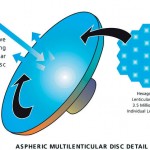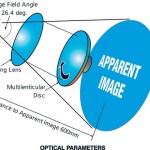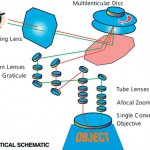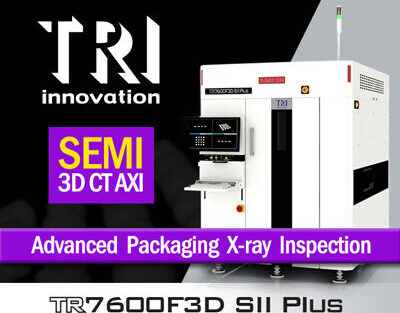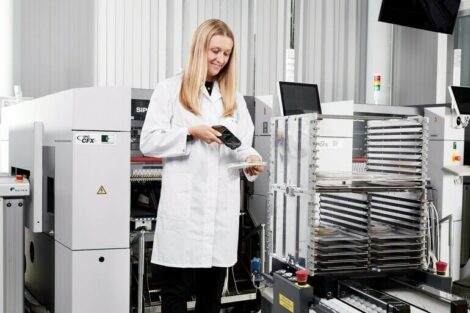Reliable automated systems for populating PCBs are a common sight on most of today’s assembly lines. With this in mind, to what extent are manual processes implemented into the production of PCBs, in today’s demanding electronics industry?
The development of automated inspection routines has been fuelled in part by the changes in electronics manufacturing processes. Firstly the departure from through-hole components to surface mount components meant that traditional in-circuit tests no longer had the electrical connectivity to provide high levels of fault coverage. It has further been accelerated by the use of smaller and smaller geometry devices forcing the requirement for a high connection count automated solution. PCB inspection systems come in a number of guises: Automated optical inspection (AOI); automated X-ray inspection (AXI); automated Infra-red inspection; manual video and manual optical inspection – positioned at post paste, post place, post solder and finished goods stages.
With all of the technological developments of automated inspection solutions, there remains the fundamental reliance on human intervention to program and train the automated inspection system to achieve the level of fault coverage that is required for a particular product. A high quality manual inspection process is essential in the generation and stabilization of an automated inspection program. This is particularly important where a variety of boards are assembled and tested.
Use of manual inspection in today’s industry
Optical inspection is often used by research and development engineers, especially where the prototypes of boards are inspected for accuracy and design for fit. At this point automated routines have not been programmed and with no defect history, quality procedures rely on the experience of their engineers and the accuracy of the tools allowing them manually inspect the boards. Often, alongside automated inspection systems there will be spot checks on production solder quality. This will usually be implemented to stringent quality procedures making sure the boards are being inspected by the automated systems consistently.
With a balance of cost and quality always in mind, new components are often sourced from competing suppliers and new suppliers are often sourced to provide new and improved components. When this occurs, it is paramount that these components are checked for quality and this can only be achieved by inspection, where often manual inspection is preferential. Where bespoken boards are designed and manufactured, optical inspection is an ideal solution where a large investment of automated inspection is not always necessary. Manual inspection systems come in a number of guises, ranging from simple bench magnifiers to high resolution video cameras, but the humble stereo microscope has become the mainstay of manual inspection solutions, primarily since whilst the resolution of video systems has increased dramatically over the decade, they are only able to present 2 D-images to the operator. However the design of the microscope dictates that operators must sit in an uncomfortable position, often for prolonged periods, which can result in operator fatigue, leading to an risk of error.
Ergonomics and manual optical inspection
Where manual optical inspection is required, a high level of ergonomics is essential to maximize comfort to operators, minimising associated fatigue from a strained body posture, optimizing both accuracy and productivity. Traditionally, optical microscopes have two eyepieces, look like a microscope and act like a microscope. The resulting combination of a human operator with a microscope provides a powerful and highly flexible inspection solution for any size of electronics manufacturing operation, yet for many, the issue of operators fatigue and the resulting errors provides a real-life and everyday obstacle.
Vision Engineering’s patented optical technology is designed to overcome the fundamental problem of a conventional microscope – the small image that exits from the microscope eyepieces. With ‘eyepiece’ microscopes, the size of the image exiting the eyepieces (the exit pupil) is around 3 mm in diameter. This means that the operator must precisely align their eyes with the eyepieces, otherwise just a small movement of the head will result in a loss of image. The result is an operator fixed rigid in an uncomfortable position. ‘Eyepieceless’ technology enlarges the image exiting the microscope eyepieces. The Vision Engineering’s patented range of stereo inspection microscopes utilise a technology to optimize ergonomics is the sophisticated Dynascope viewing head used on the Lynxx – an advanced stereo zoom microscope – as well as the company’s range of optical measuring microscopes.
The patented Dynascope optical technology used in Lynxx systems utilize a 148 mm diameter multi-lenticular (multi-lens) disc surface comprising of over 3.5 million individual lenticules (lenses), each measuring just 70 microns in size. The Dynascope disk spins at 3,400 rpm to merge the millions of individual optical paths into a smooth, expanded stereo image with a generous depth of focus and a wide field of view. In use, the multi-lenticular disc serves to expand the intrinsic pupil of the system. The resultant image is reflected through the field lenses to the operator’s eyes and the high resolution image is projected onto a large viewing area for maximum viewing comfort.
As operators frequently alternate their views from the magnified object image to the actual object (especially during rework or when manipulating parts), the long distance to the apparent magnified image eliminates the need for the eyes to refocus each time. In fact, the magnified image is almost exactly the same distance from the operator’s eyes as the actual sample is – a tangible advantage in reducing eyestrain and fatigue. In addition, employing a viewer rather than eyepieces permits much greater positional head freedom and an upright body posture for the operator, plus allows the use of spectacles. Operators who require reading glasses remove them for microscope viewing and must then refocus at a different distance, which again quickly leads to eye fatigue. Operators with astigmatism fare worse: Removing spectacles immediately spoils their vision. The significant ergonomic advantages contribute to increased production rates and reduced scrap as the operator is able to work longer without experiencing eyestrain and fatigue.
Updated LED stereo microscope
Vision Engineering Limited is launching an updated Lynxx LED stereo microscope with oblique and direct viewer. Now employing LED illumination and an oblique and direct viewer, the Lynxx provides a full 360 °-view around the PCB for 34 ° angled inspection of solder joints and pad alignment that can often be hard to reach by usual stereo inspection methods. The LED stereo microscope is widely used in the electronics industry reportedly providing unrivalled ergonomic performance and optimum clarity with superb optics. In addition, the updated version benefits from LED illumination, projecting brighter, whiter, long-life illumination on the PCB. Consumable costs have also been greatly reduced with costs decreasing by more than 80 % and lamp life lasting up to an impressive 10,000 hours. The dimmable LEDs allow for every application to benefit from the precise intensity of illumination.
The LED illumination can now be used in conjunction with the impressive oblique and direct viewer. Coupled with the switchable direct view and the benefits of stereo viewing offered by the updated LED stereo microscope, surface features can be easily inspected in three dimensions without moving the workpiece, ideal for inspecting device leads, PCB via holes, connectors, solder joints, solder bumps on SMT, TAB and ball-grid array devices, and precision wafer bumping characteristics. It is this technology that is used in parallel to automated processes, maximizing the quality of PCBs. Manual inspection plays an important role alongside automated systems or where automated systems are not a cost-effective option and since technology is constantly changing and components are evolving, optical inspection provides a magnified view for engineers so they apply their expertise and knowledge to individual case by case scenarios and imperfections.
50th Anniversary
Now celebrating their 50th anniversary, Vision Engineering’s patented optical technology brings the stereo microscope into the 21st century, breaking the mould of the traditional, uncomfortable microscope. The latest evolution of the patented ‘eyepieceless’ technology not only removes the need for the restrictive eyepieces of a conventional microscope, but provides the user with the ability to see high detail, in complete comfort.
EPP Europe 449
zusammenfassung
Hauptstütze der manuellen optischen Inspektion ist das Stereo-Mikroskop. Vorgestellt wird ein okularloses Stereo-Mikroskop für sowohl einfache als auch komplexe Inspektionsaufgaben, die hoch auflösende Stereobilder erfordern. Die okularlose Optik garantiert kontrastreiche Stereo-Bilder, hohen Arbeitskomfort und geringere Ermüdung des Bedieners, und dadurch eine Steigerung der Qualität und Produktivität.
Le microscope stéréo constitue l’instrument essentiel de l’inspection optique manuelle. Le microscope stéréo sans oculaire présenté convient pour les tâches d’inspection simples ou complexes nécessitant des images stéréo à haute résolution. Dépourvu d’oculaire, cet instrument assure des images stéréo fortement contrastées, un confort de travail élevé ainsi qu’une moindre fatigue pour l’utilisateur. Des avantages qui permettent d’augmenter la qualité tout comme la productivité.
Lo strumento principale per l’ispezione ottica manuale è il microscopio stereo. Viene presentato un microscopio stereo senza oculare per ispezioni semplici e complessen che richiedono immagini stereo ad alta risoluzione. L’ottica priva di oculari garantisce immagini stereo ricche di contrasto, comodità nel lavoro e il minimo affaticamento dell’utilizzatore, quindi un aumento della qualità e della produttività.
Facts and figures
Vision Engineering designs and manufactures eyepieceless and expanded pupil microscopes for laboratory and industrial applications. Established in 1958, more than 300,000 systems have been installed worldwide for inspection and measurement tasks. Company headquarters are based in Woking, UK with manufacturing facilities in the US and UK. Regional offices are located throughout North America, Japan, Europe and Southeast Asia.
Share:




